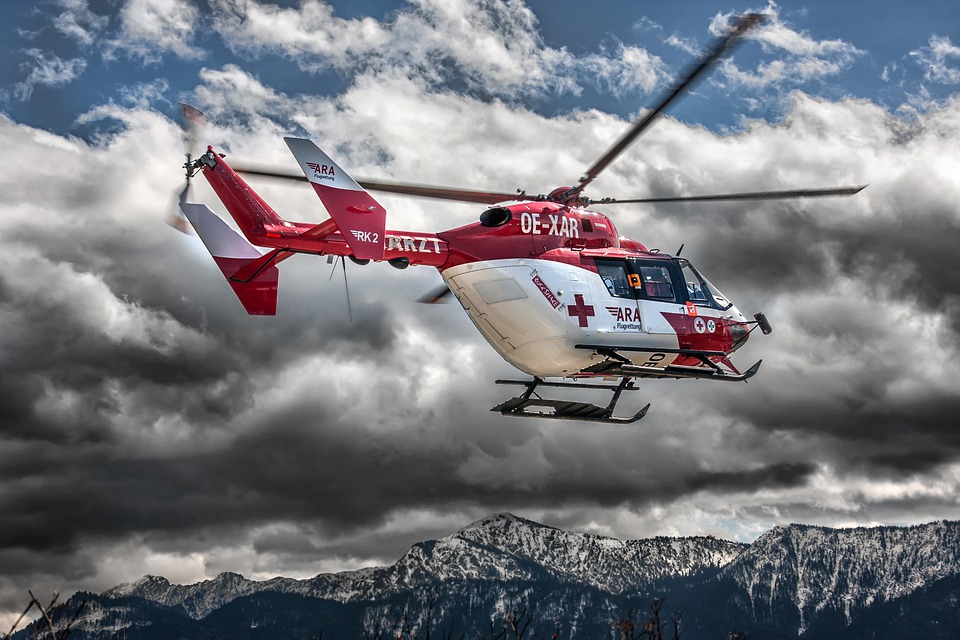HI Uplift: Milestone sees demand uncaged in 2022


“The lions have been let out of the cage.” Just nine words from Pat Sheedy, president and CEO of lessor Milestone Aviation Group, capture the new world of opportunity facing the commercial helicopter industry. After years of stagnant or declining demand and industry bankruptcies, Sheedy first detected encouraging growth signs during the second half of last year.
After several years of downcycle in the global helicopter market, the current upcycle was coinciding with a renewed emphasis on energy security in Europe, following the Russian invasion of Ukraine. Sheedy also saw opportunities for emergency medical service (EMS) flights and the redeployment of helicopters into secondary missions such as fire-fighting roles to replace aging (and now sanctioned) Russian-built helicopters and other types.
Notwithstanding the humanitarian tragedy unfolding in Ukraine, Sheedy said European governments were being forced to reprioritise energy security. Germany and Italy are reliant on Russian hydrocarbons for 40% to 50% of their energy needs. “This will not happen in future,” Sheedy told Helicopter Investor. “It will have to be a federalist approach and that will have a downstream effect on the rotary market demand.”
As new projects come on stream, there will be a redeployment of those helicopters supporting offshore oil and gas operations rather than a redeployment of the assets into potential secondary missions. “That’s not growth in terms of new equipment coming into the market. But it is growth in terms of redeploying assets that had not been fully utilised for the past four or five years. This is our priority focus in terms of growth.” Supply chain difficulties were frustrating the return of some aircraft to service for many lessors and operators – particularly Sikorsky S-92s.
While a re-assessment of energy policy was unlikely to trump climate change policies, particularly for publicly-listed companies, Sheedy does foresee some relaxation in regulations – particularly in the UK. It would be interesting to see if the trend away from financing assets that lacked strong ESG credentials would be reversed, he added. Although he acknowledged this may prove problematic for publicly listed companies with shareholders to appease.
But it is not just the offshore oil and gas sector that needs lift. “Everybody is talking about wind – and that’s certainly a growth area where we are already the biggest lessor.” Between 30 to 40 helicopters currently operate in the offshore wind sector, of which about 30% are owned by Milestone. The overall market is likely to grow to 130 to 140 helicopters over the next 10 years. “It’s growth of only 10 helicopter a year but it is still growth,” Sheedy tells Helicopter Investor. “It’s going to be a key driver of growth, but it is going to be a very good market and one that we are very focused on and a big player in.”
In addition to growth in offshore oil and gas and renewable energy, Milestone sees opportunities in EMS and will continue to invest in this sector as it grows over the next 10 years. There are strong opportunities in emerging markets such as China and the Middle East, where there is relatively low penetration. “There’s not going to be fast growth but there is significant potential if we look over the longer term of the next decade,” said Sheedy.
The utility sector – including firefighting, humanitarian aid and heavy lift – also offers opportunity and now, some risk stemming from sanctions imposed on Russian OEMs. “This sector has been traditionally dominated by older Russian helicopters,” said Sheedy. “But there is now a big question mark over the industry’s ability to support these aircraft.” What aircraft will ultimately replace older Russian helicopters, such as the Kamovs, will be a big question for the next 12 to 24 months, he added.
While utility is not a sector that has typically attracted new helicopters – due to the price point on which operators trade – it could offer a home for second mission aircraft after their primary deployment in oil and gas and EMS. For example, there are 13 or 14 Kamov firefighting helicopters based in Spain that will be increasingly difficult or impossible to maintain after sanctions.
“The price point [for firefighting operators] is still rather low to attract new aircraft,” said Sheedy. “But I wouldn’t rule it out, as there’s going to be a supply crunch from redeployable aircraft. So, the utility sector is certainly an area where western-built aircraft are going to be needed.”
It is this mix of demand ingredients that makes Milestone bullish about the future. Neither is it a question of green shoots of revival but rather “real tangible demand now to execute contracts on”. While Sheedy acknowledged the prospect of unforeseen events derailing industry growth, the current market indicators are all pointing to an unlocking of the lions’ cage.
“We are, as an industry, in a much better position than we have been seen since the early part of the past decade.”
Subscribe to our free newsletter
For more opinions from Helicopter Investor, subscribe to our email newsletter.






